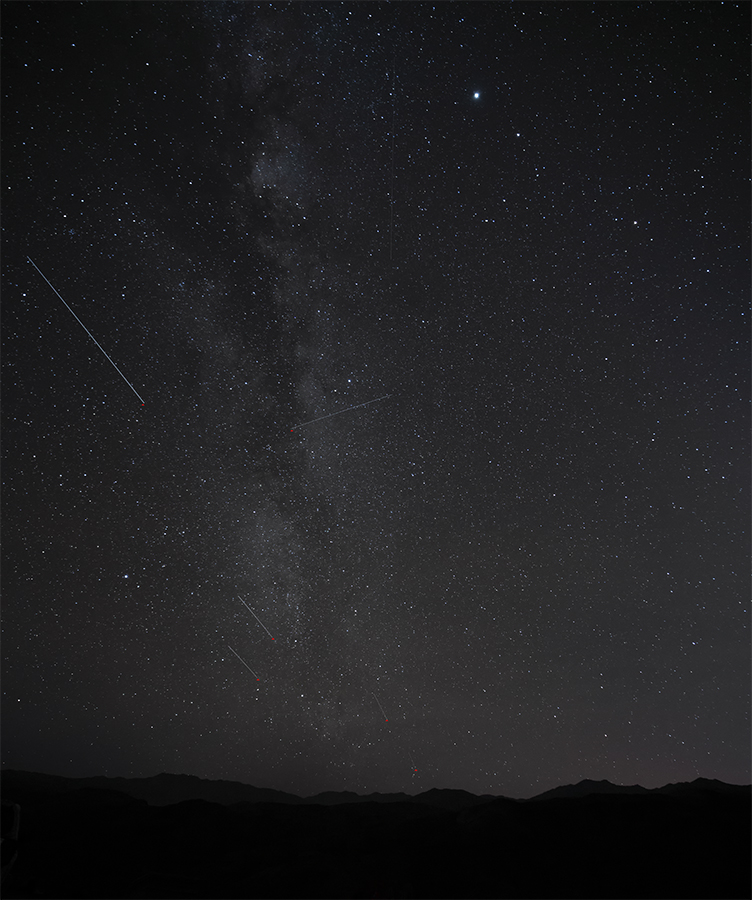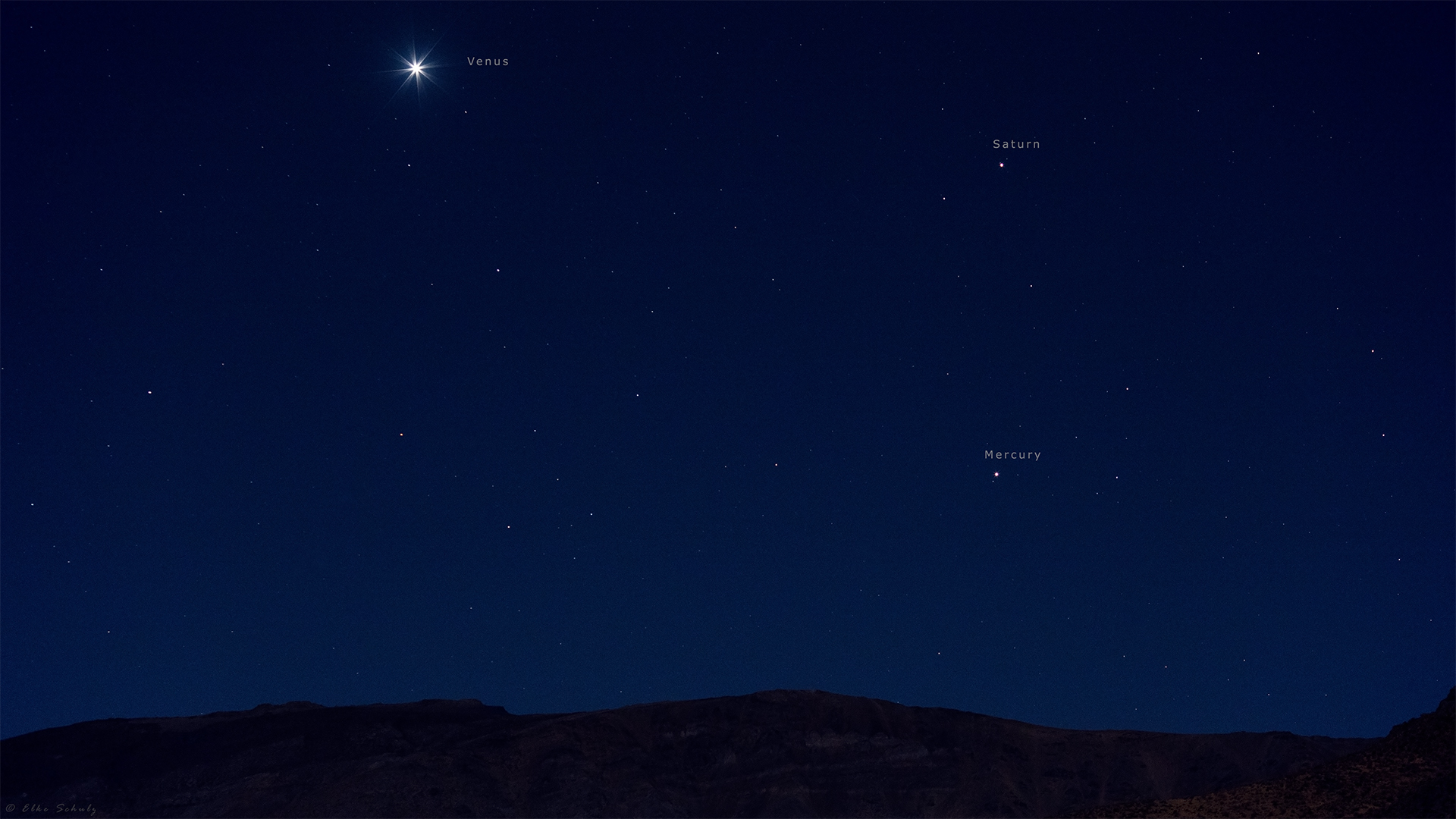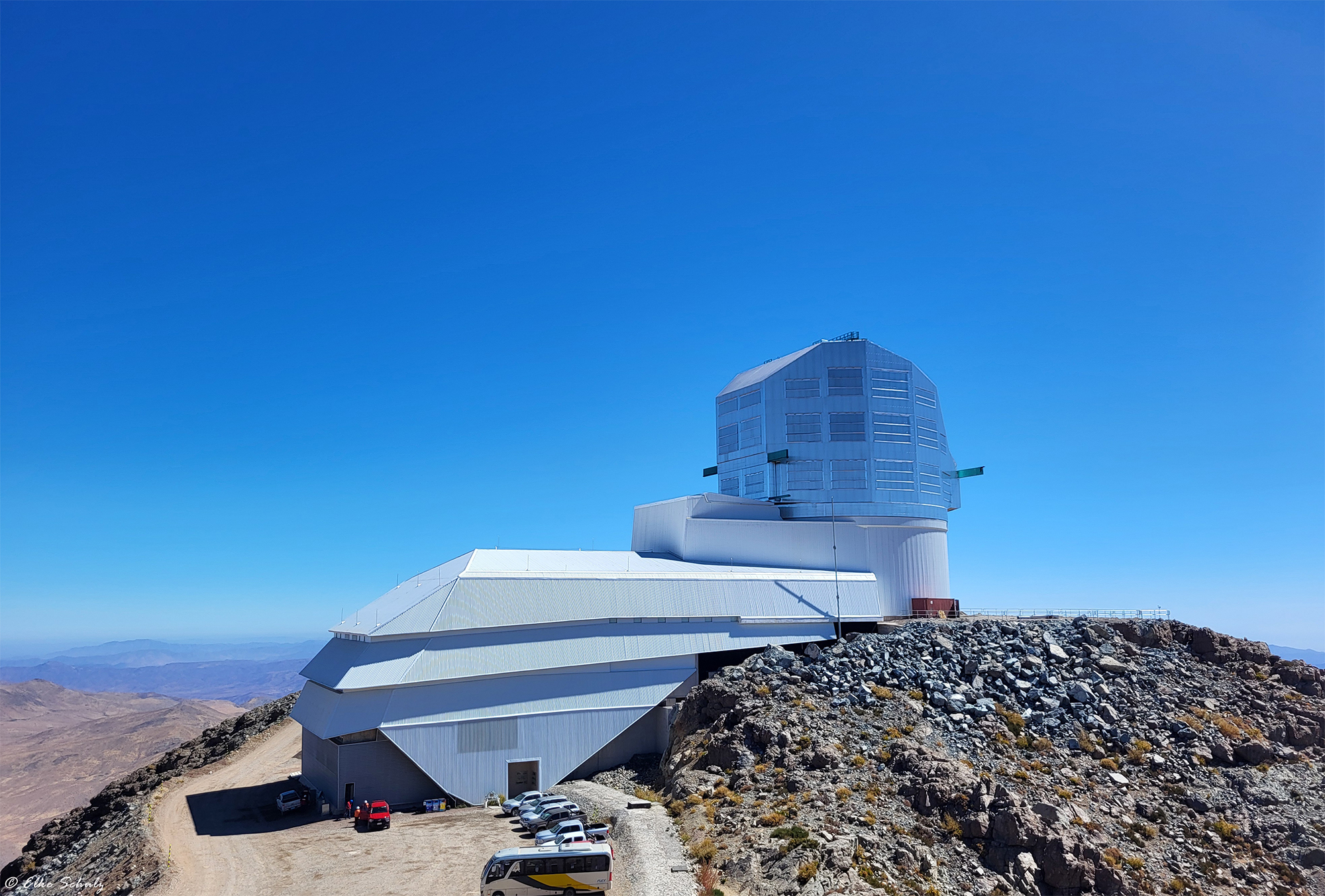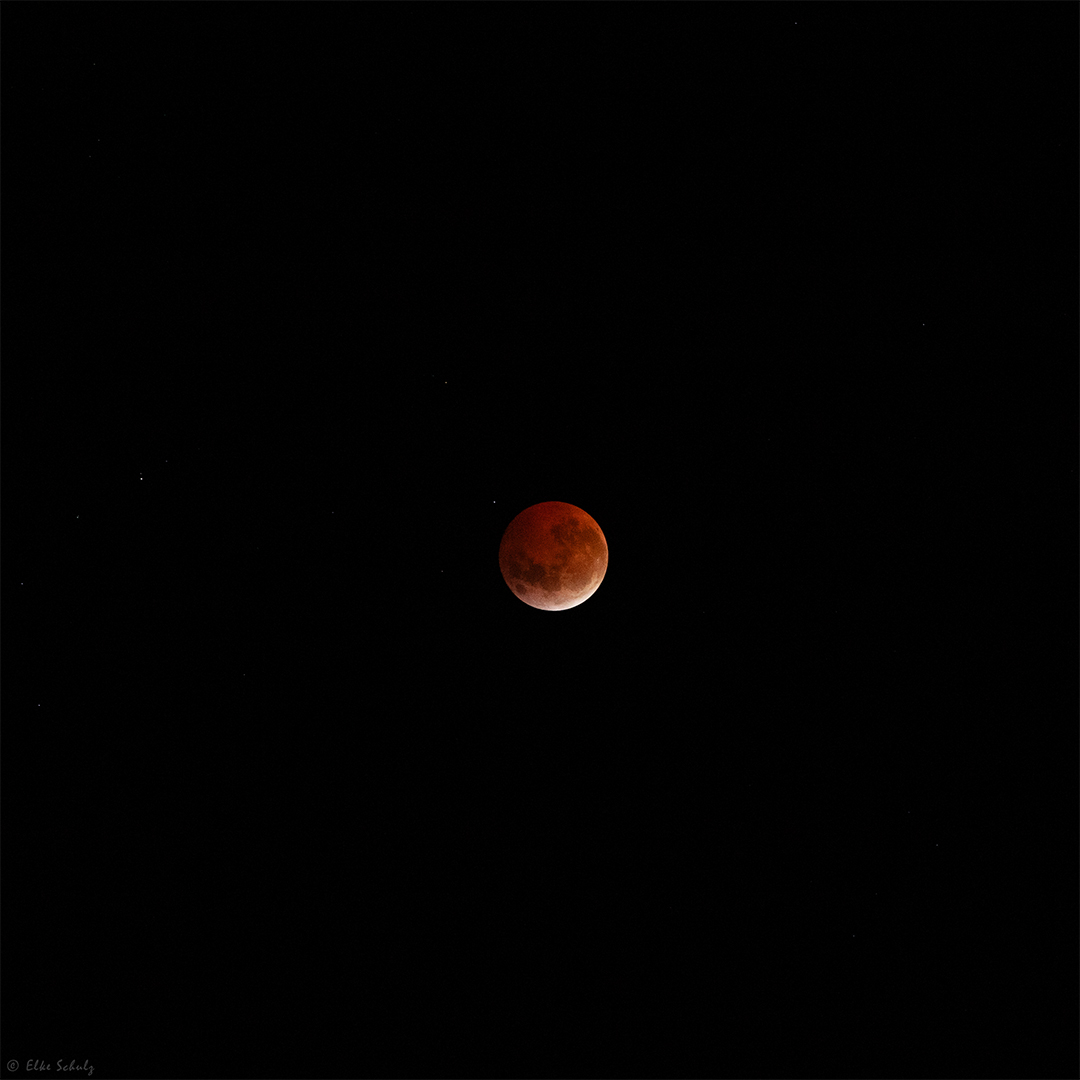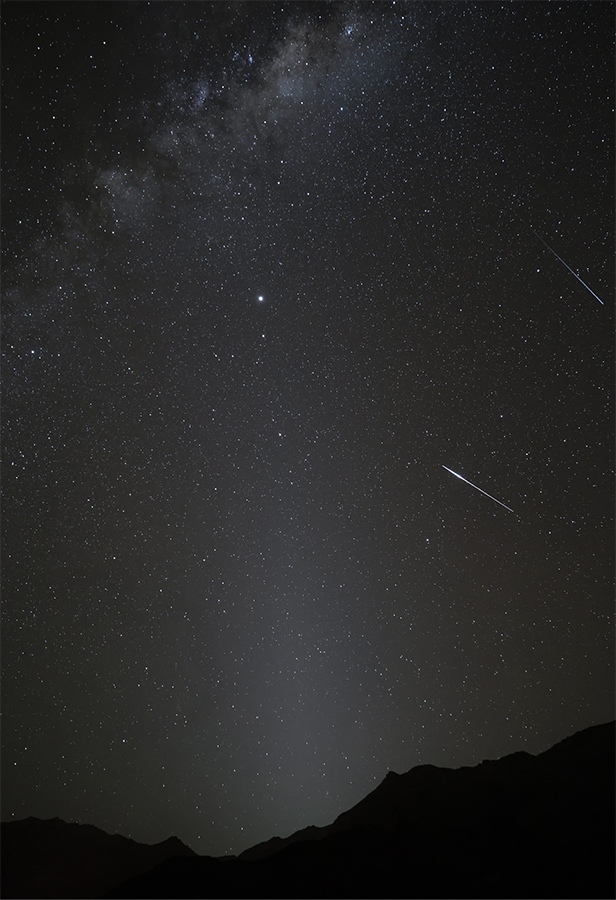
Zodiacal light and Starlink satellites
I was hoping to take some pictures of the zodiacal light (also called false dusk or dawn) along with some meteors of the Lyrids meteor shower. I got the zodiacal light alright, but instead of shooting stars, I got rather bright Starlink satellites.
The Starlink satellites are part of Elon Musk’s program to provide fast internet to every corner of the Earth. He originally applied for – and was granted – the permission to launch 12,000 satellites into space. These satellites will create a dense network within the Low Earth Orbit (LEO), i.e. an altitude of 2,000 km or less.
Just to put things in perspective: We currently have 5,685 satellites in Earth’s orbit, and are already experiencing major problems regarding space debris. Just imagine how this issue will be exacerbated by 12,000 more satellites…
But accumulating space junk is not the only problem. Since the first launch in May 2019 it has been evident that the large number of these bright, rapidly moving satellites severely impacts ground-based astronomy, especially those observatories that are searching for faint, potentially Earth-hazardous objects.
To make matters even worse, Elon Musk is hoping to expand his program to eventually include 42,000 satellites. And his company SpaceX is not the only one working on the global internet project. Amazon has entered the game and has already plans for 3,236 satellites.
It seems that in the future we have to contend with more than bad weather conditions and artificial light.
In this 20-second exposure you can see six satellite trails simultaneously.




